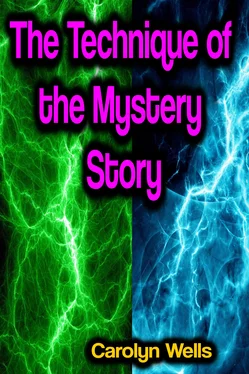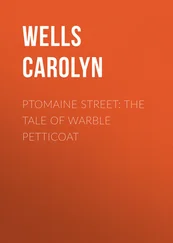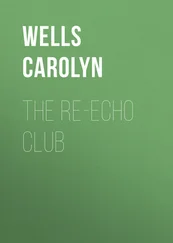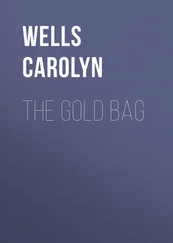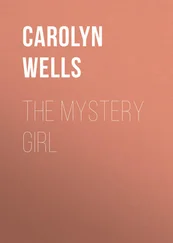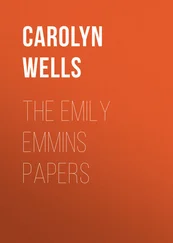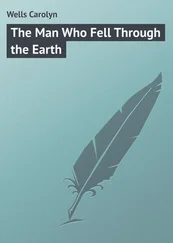1 ...7 8 9 11 12 13 ...16 The intention of the above paragraph will be more precisely conveyed if we include under the name of detective not only the man from the central office, but also anybody whom the writer may, for ends of his own, consider better qualified for that function. The latter is a professional detective so far as the exigencies of the tale are concerned, and what becomes of him after that, nobody need care,—there is no longer anything to prevent his becoming, in his own right, the most fascinating of mankind.
Before Poe's or Gaboriau's stories, appeared the "Memoirs of Vidocq." This work, thought by many to be largely fiction, is the history of a clever villain who became a detective, though never called by that name. He was a Secret Agent, and is called on his own title page, Principal Agent of the French Police. His memoirs are old-fashioned, dull and uninteresting, but they show glimmerings of the kind of reasoning that later marked the Fiction Detective.
Perhaps Gaboriau was the first author to use the terminology, since become so familiar, of detective, clues, deduction, etc.
Poe ascribed to his Dupin, "analytic ability," and this is all that is claimed for the conventional detective of fiction, though perhaps more acutely described by Brander Matthews as "imaginative ratiocination."
Poe goes further in saying Dupin's work was "The result of an excited or perhaps a diseased intelligence." This statement may have mirrored the author's own mind, for, while making no assertion, Professor Matthews observes that he should understand any one ho might declare that Poe had mental disease raised to the n thpower, and we have long since been told that "great wits are sure to madness near allied."
3. The Detective-Fictive and Real
But it is this very principle that marks the difference between the detective in fiction and in real life. The cleverest detectives in life are not men of diseased intellect, however greatly developed may be their powers of ratiocination. It is just that touch of abnormality, of superhuman reasoning, that makes a Transcendent Detective.
Again, the work of the fiction detective is always successful. Naturally, because his work is planned to this end by the author. The fiction detective plays his game with marked cards. Though seemingly groping in the dark, he is walking a definite path laid straight to a definite end. He is pushed off on false scents, but pulled back and set right again by an adjusting power which does not exist in the case of real detectives.
Indeed, the sooner the writer of detective fiction realizes that the detective of fiction has little in common with the detective in real life, the better is that author equipped for his work.
The real detective, for one thing, is rarely a man of culture or high ideals. The fiction detective is usually an aristocrat, unfortunately impoverished, or working at his art for art's sake.
The real detective, however great his analytic ability, often finds that he cannot apply it to his case. The fiction detective never has this experience; he finds his case ready made and perfectly fitted to his powers.
The real detective finds little or nothing in the way of useful material clues. The fiction detective finds his properties laid ready to his hand at the right moment. Dropped handkerchiefs, shreds of clothing, broken cuff-links, torn letters,—all are sprinkled in the path ahead of him, like roses strewn before a bride.
Even Nature lends a helping hand to the favored detective of fiction. Usually "A light snow had fallen the evening before." This snow is declared by credible witnesses to have begun at one psychological moment, and stopped at another; thus allowing the inevitable display of footprints of certain sizes, shapes and superimposition. Indeed the laws of nature are willing to give way, at need, and vegetation takes on unusual qualities to help along the good work. Sherlock Holmes continually finds his indicative footprints on turf or grass plot, and of course the criminal is identified at once.
But the real detective seldom if ever finds these helpful footprints at the right time and place. In case of his need of them, the obstinate ground is hard and unimpressionable; or the snow is melting and shows only oblong holes; or the grass refuses to present a clear and definite impression; or even if fairly respectable muddy footprints appear on a nice, clean, hard-wood floor, they are so incomplete in outline that they might have been made by any well-advertised shoe.
The criminals and suspects in fiction must presumably wear shoes made for the purpose, with flat level soles that touch the floor at all points and leave an exact working diagram, instead of a shapeless blotch with ragged edges.
Similarly with finger-prints. Though carefully impressed in incriminating places by the fiction criminals, in real life they are rarely found where they can be of use. The finger-prints found on the discarded empty frame of the Mona Lisa have not yet led to the recovery of the picture; whereas in fiction they would long ago have put the thief behind bars.
No, the fiction detective is not a real person, any more than the fairy godmother is a real person; but both are honored and popular celebrities in the realm of fiction.
And if one would realize the immense superiority of the fiction detective for fiction purposes he has only to read any of the occasionally published "true detective stories," or even those which are founded on actual cases.
Many years ago, old-fashioned family papers published stories, beneath whose titles a line in parenthesis read, "Founded on fact." Such tales were invariably uninteresting, and at last the editors learned not to publish them.
A true tale of a criminal problem and its solution is uninteresting because it is not planned to be interesting. The technique of the detective story calls for the same kind of planning and preparation on the part of the author as does a successful act of legerdemain. The prestidigitator takes a rabbit out of a silk hat, but unless he had planned for it beforehand he couldn't do it. What he might take, unplanned, out of the hat,—its leather band or gilt stamped lining,—would be of no interest to his audience.
It is the old-fashioned or the inexperienced author who thinks that an incident which has come within his own experience or that of his friends, is necessarily available for a story.
One of Gelett Burgess' celebrated Bromides is, "Now this thing really happened!" And it is a fortunate writer who escapes the occasional, "I've something to tell you about my neighbor's mother-in-law; I know it to be true, and you can have it for one of your stories!" The enthusiastic generosity of the speaker causes his face to glow with the delight of "helping an author," and how can you tell him that not one in a million such anecdotes would be of use to you, and that moreover, your head and note-book are both crammed with material of the right sort waiting to be used?
Your helpful friend makes no claim save that his story is a fact, and he can never understand how apt is this quality to bar it from fiction. He can never understand the difference between fact and truth—truth, the wide universal element that must be adhered to; and fact, the petty and narrow incident that is rarely of interest, and often indeed contradicts truth.
Realism, according to its American master, Mr. W.D. Howells, is nothing more than the truthful treatment of material; and in Mr. Howells' hands this treatment has produced writings of absorbing interest. But it is an equally truthful treatment of material that appears in the Social and Personal column of the Miller's Corners Weekly Gazette, or in the Congressional Record, yet we are not interested in either.
Читать дальше
